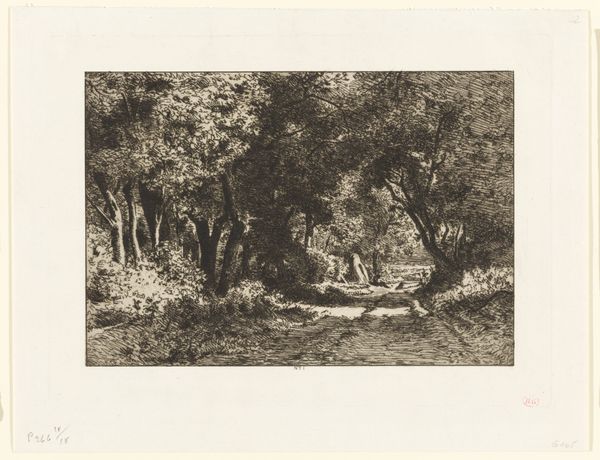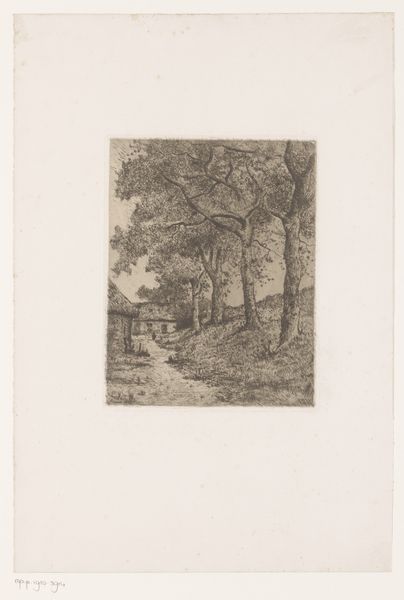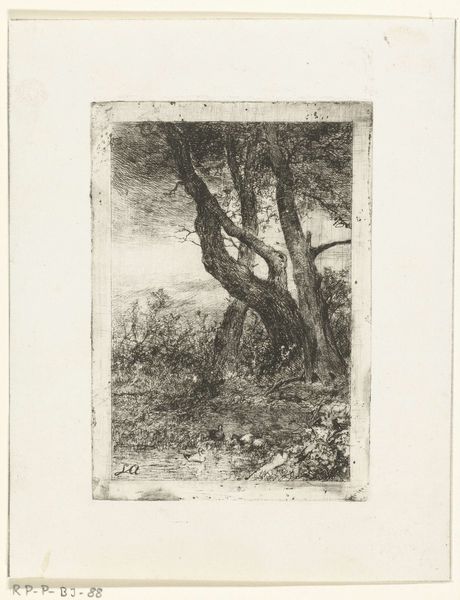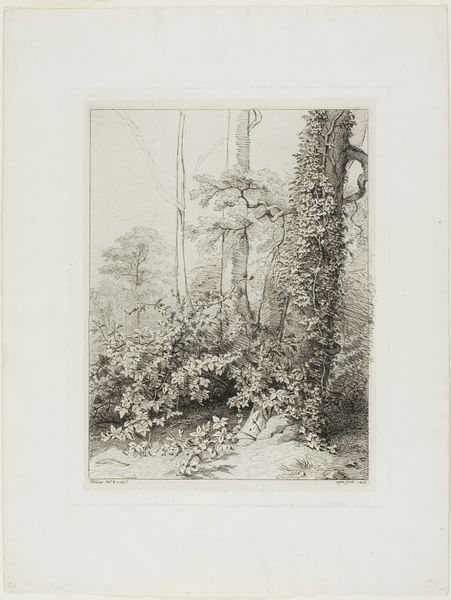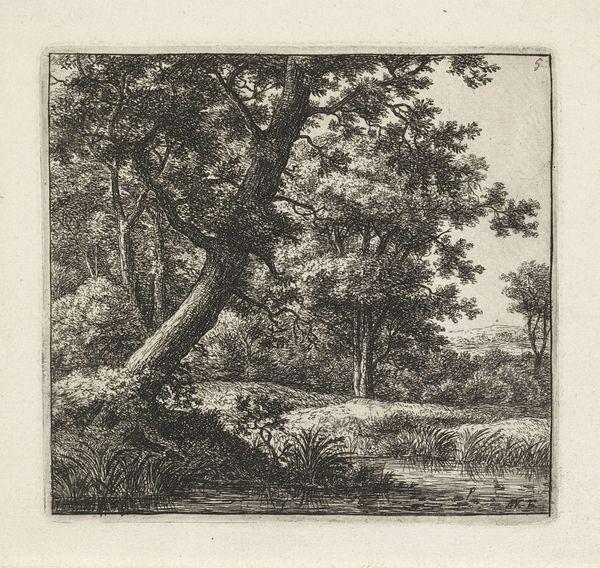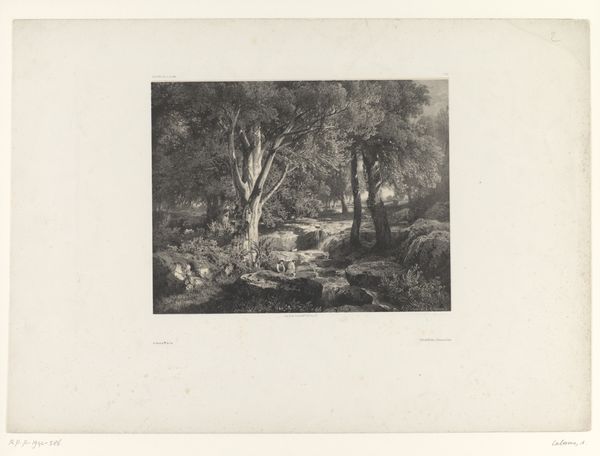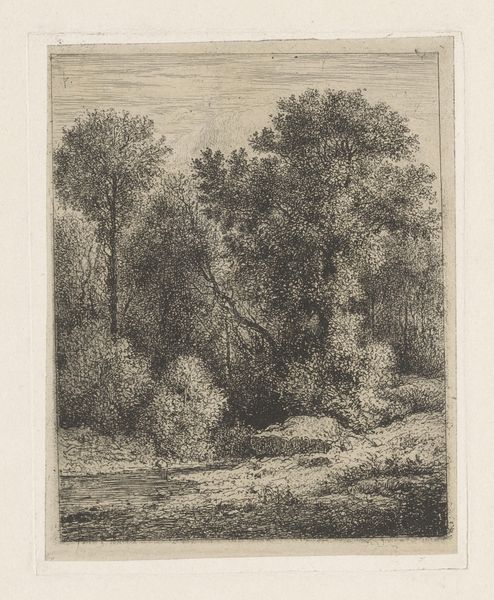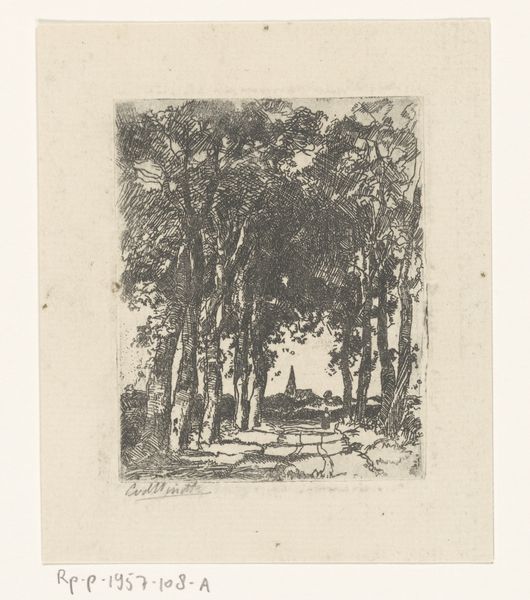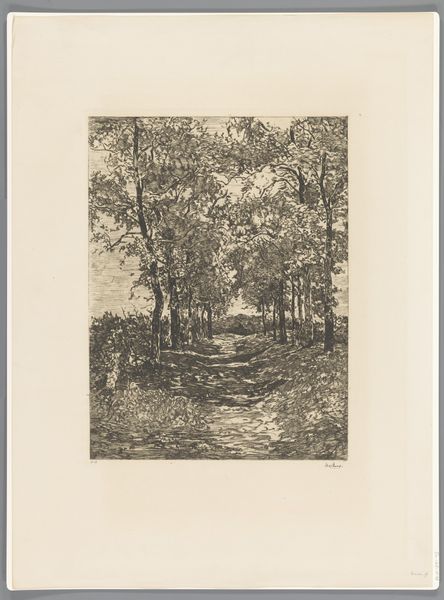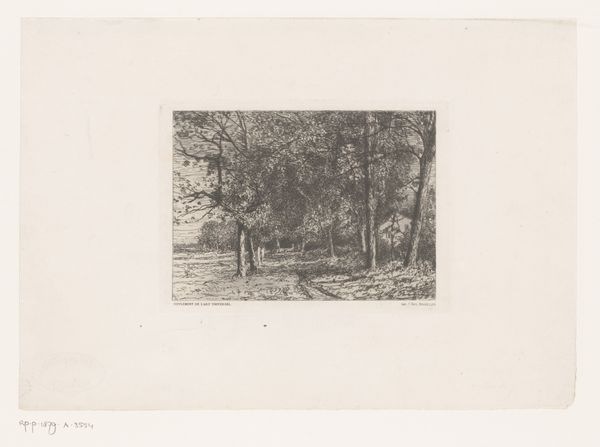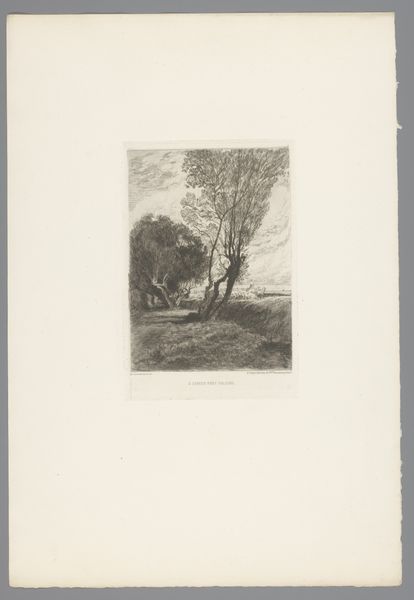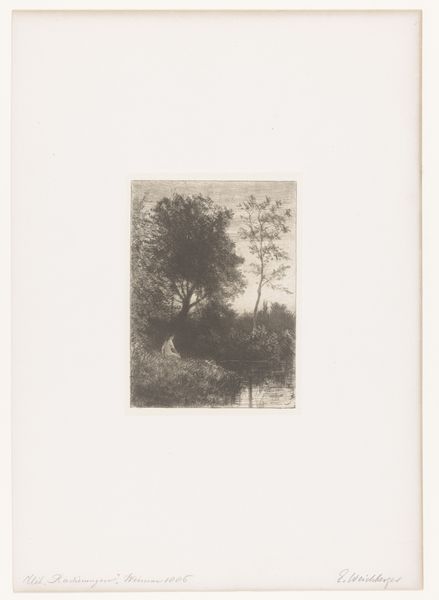
drawing, print, etching, paper
#
drawing
# print
#
etching
#
landscape
#
paper
#
pencil drawing
#
genre-painting
#
realism
Dimensions: 254 × 195 mm
Copyright: Public Domain
Editor: Charles-François Daubigny's etching, "The Shepherd and the Shepherdess," from 1874 presents a pastoral scene. I am struck by how the composition balances a sense of deep forest with a central clearing. The dark lines of the trees contrast with the delicate rendering of the sheep and figures, which creates a subtle luminosity. How do you read the spatial and tonal dynamics within this landscape? Curator: The work indeed presents a fascinating study in contrasts. Notice how the density of the foliage, rendered through a network of intricately worked lines, serves to frame and contain the central clearing where the figures and animals reside. Observe how Daubigny uses variations in the etching technique—the weight and frequency of the lines—to establish spatial depth. Light becomes a structural element, articulated not by color but by its absence in the inky shadows and its presence in the open spaces. The tonal shifts suggest an engagement with atmosphere, rather than precise descriptive detailing. Editor: That's a keen observation. I was also thinking about the strategic positioning of the figures. They're not centered but placed slightly to the right, which creates an asymmetry within the composition. Does that asymmetry hold significance to the reading of the landscape? Curator: The off-center placement disrupts a purely idealized, symmetrical landscape. Instead, the human figures and the animals become elements within the broader structure of the environment, an interwoven reality of light and shade, activity and quietude. They become an integral part of an immersive atmosphere of lived existence rather than focal points for glorification. Are you finding this formal interpretation helpful for your analysis? Editor: Yes, very much so! I hadn't considered how their placement created more depth in the image. It's fascinating how attention to the form helps one discover new elements of a work. Thank you for sharing your perspective. Curator: And thank you for prompting such insightful questions, allowing us to revisit and refresh our understanding.
Comments
No comments
Be the first to comment and join the conversation on the ultimate creative platform.
